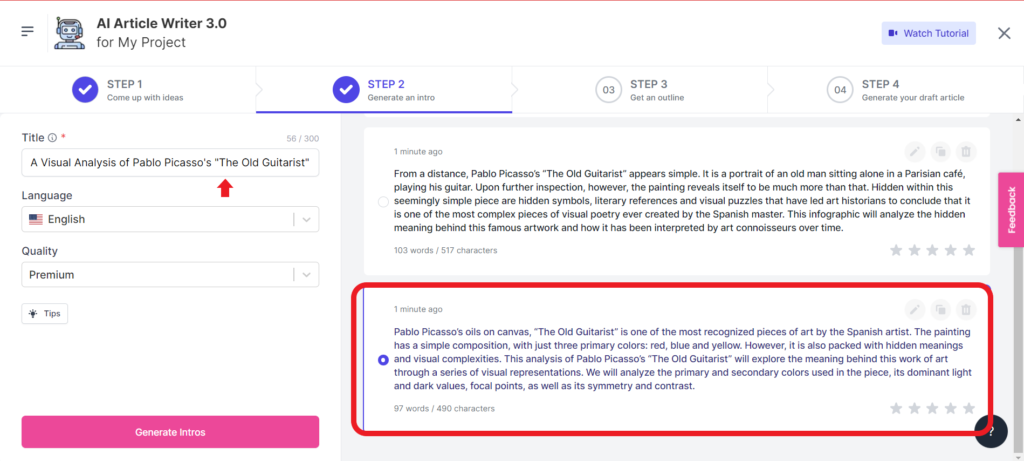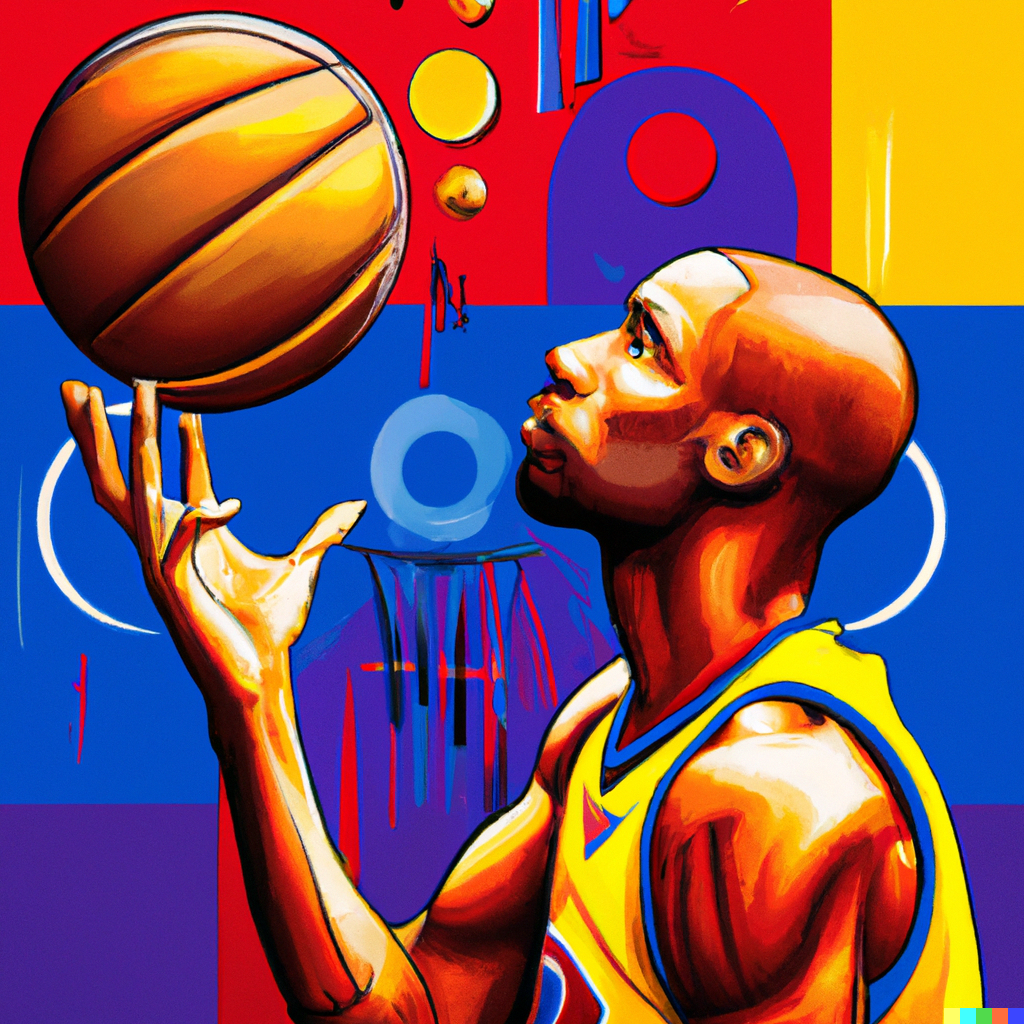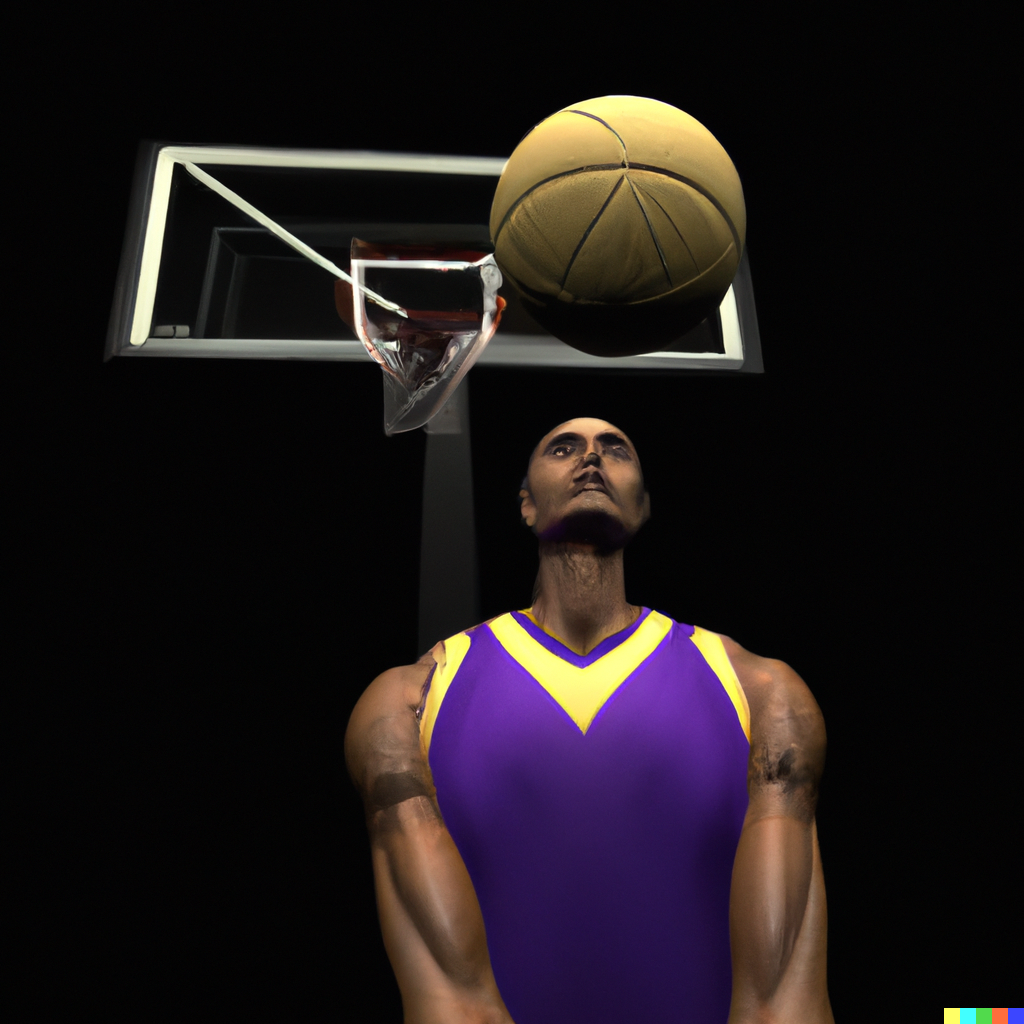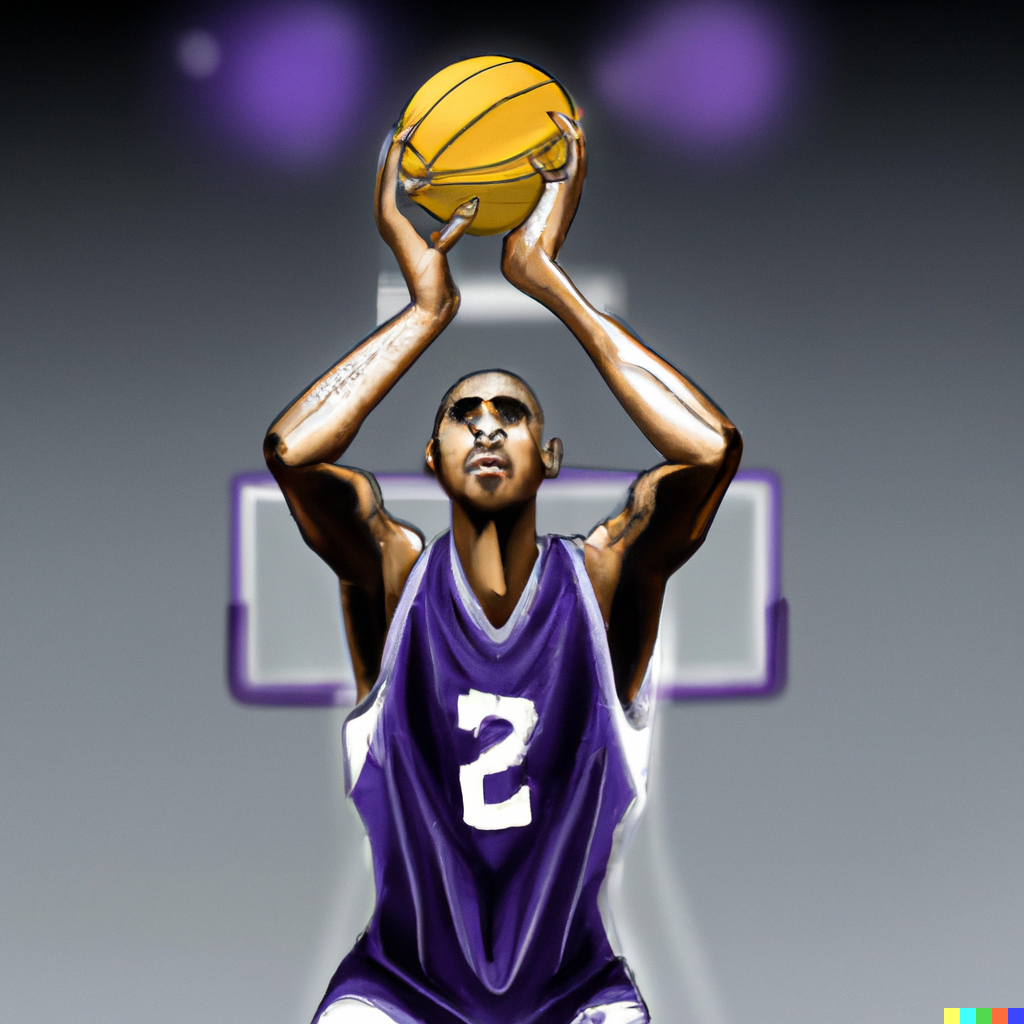
The advent of artificial intelligence has made a significant impact in many fields. For example, the GPT-3 model and its impact in fields such as content writing, copywriting, customer support, and product design.
The next field AI going to revolutionize is art. From the start of the year 2022, the talk of an AI art generator has begun. People have witnessed the release of AI art generators, such as DALL.E 2, Midjourney, Disco Diffusion, and Stable Diffusion month after month.
In this article, you will learn what is prompt and how to communicate with AI art generators. Though this article is primarily focused on Open AI’s DALL.E, you can apply this knowledge to other AI art generators as well.
What are Prompts?
Prompts are descriptions in natural language that acts as an input for AI art generators, such as DALL.E 2, Midjourney, Stable DIffusion, Disco Diffusion, and other machine learning models. It is the communication medium for AI art generators, also known as machine learning models.
Prompts convey your ideology to the text-to-image machine learning models.
Prompts can be as simple as a single line or they can be vague. Sometimes you can even use emojis as prompts and get the optimal output.

Image Prompts
Prompts are not always natural language text, but can also be images.
Yes, you can edit existing images and build upon them or you can make new variations of the existing image in DALL.E and also in other AI art generators as well.
Prompt Examples
Some examples of text-to-image prompts are as follows:
- Scarlett Johansson, portrait, Cool Color Palette
- Zendaya smiling, oil painting
- kobe bryant shooting free throws, pencil drawing, realistic
- kingfisher bird, by Akihito Yoshida, Cool Color Palette
- A beautiful woman sitting on the top of the building, looking at the stunning mountains, Trending on artstation
- A girl, makoto shinkai style, anime, japan animation’s background, 80mm camera lens, wide angle, night view, city, building, edge, high detail
- a deserted city, empty buildings, vegetation, trending on artstation, high detail, high definition, high quality, photo-realistic, ultra realistic, hyper-realistic, 4k
Why Does Creating a Good Prompt Matter?
All AI art generators are pre-trained using millions of datasets of text-image pairs. They work based on the caption matching technique.
Hence, if you want extraordinary artwork, you need to give an extraordinary prompt with proper keywords.
Of course, you will get a result for whatever you give as a prompt. But, to create proper art, you need to craft your prompt well organized.
The output of the AI-generated artwork is directly proportional to the quality of the prompt.
How Do AI Art Generators work?
To write good prompts, it is essential to know how AI art generators work.
AI art generators are not pre-programmed by developers. It is pre-trained on millions of text-image pairs. I.e., it was exposed to millions of labeled images using the neural network called CLIP (Contrastive Language–Image Pre-training).
With that exposure, the AI art generator built some kind of understanding. Out of that understanding and diffusion models, it is generating the art based on the prompt given. Nobody knows how AI art generators will react to certain prompts.
By now, you must have understood how AI art generators work and the importance of text descriptions.
It is essential to construct your prompt with multiple keyword elements as explained in this article to bring out the best from AI art generators.
Tips to Write Good Text-to-Image Prompts
To write good text-to-image prompts, just follow the elements mentioned below. By following this structure, anyone can easily create well-organized prompts.
Want a shortcut? Steal Prompt Ideas from Other Artists Like a Boss!
Nouns
A noun is a very important element in a prompt as it denotes the subject. The prompt will not be completed without a noun. However, you can get a result without a noun, but it will not be meaningful.
Sometimes, emojis are counted as nouns by AI art generators. Cool, isn’t it?
Adjectives
Adjectives always bring certain vibes to the artwork. It gives the artwork life by allowing you to infuse it with multiple feelings.
Examples of adjectives include, beautiful, magnificent, realistic, colorful, massive, etc.
In addition to being used emotionally, adjectives can also be used technically.
A simple word like “sports photography” will indirectly convey technical details, such as shutter speed, aperture, ISO, and burst mode to the AI machine learning models. Just like this, adjectives always save you when you don’t have technical knowledge of any field that you want to include in your artwork.
Prompt: Kobe Bryant shooting free throws, realistic, sports photography

Artist Names
Just by including the artists’ names in your prompts, you can bring the artistic touch of your favorite artist.
For example, if you want to include surrealism, the style of cubism and neoclassicism, you can include the name of Pablo Picasso in your prompt.
If you want to include a bizarre, hilarious, and grotesque kind of style, you can include the 21st-century artist Beeple in your prompt.
Unbundling Technique
If you want to have Pablo Picasso and Beeple style but with some variation, you can use “Unbundling” technique.
Unbundling is an expansion technique proposed by “Bakz T. Future”. In the unbundling technique, you will be giving a long description of a particular style of the artist’s various characteristics and components instead of just giving the artist names.
This brings more variations with a familiar style of your favorite artist.
Prompt (Without Unbundling): Kobe Bryant shooting free throws, in the style of The Old Guitarist by Pablo Picasso, digital art

Prompt (With Unbundling): Kobe Bryant shooting free throws, The painting has a simple composition, with just three primary colors: red, blue and yellow. However, it is also packed with hidden meanings and visual complexities, digital art

I have used the GPT-3 tool for “Unbundling technique”. If you want to use the same, try Jasper or Writesonic. Otherwise, you can use Google or your own description.

Style
To use your own style instead of inheriting the style of other artists, you just need to include keywords that are related to certain styles, such as fantasy, surrealism, symmetry, contemporary, modern, minimalism, pixel art, and so on.
Prompt: Kobe Bryant shooting free throws, symmetry, digital art

Computer Graphics
Apart from the normal styles, the next level is computer graphics (CG). To smartly enhance the effectiveness and meaning of artwork, you can include CG keywords, such as Octane render, Cycles, Unreal Engine, Ray tracing, and 3D rendering.
Prompt: Kobe Bryant shooting free throws, 3D rendered , digital art

Quality
Lastly, you can specify the quality of the AI-generated image. To do so, you need to add keywords, such as high, 4k, and 8k.
Prompt: Kobe Bryant shooting free throws, digital art, highly detailed, 8K

Art Platform Names
Adding art platform names is another way to include styles that you might not be aware of. For example, adding keywords like “trending on artstation, trending on Behance, Unreal Engine, Weta Digital, Wētā FX, WLOP”, and etc in the prompt will result in the style extracted from these platforms.
If you have no clue about the styles, you just mention any one of these names in your prompt and reap the benefit.
Prompt: Kobe Bryant shooting free throws, digital art, trending on artstation

Art Medium
Another element that you don’t want to miss is mentioning the medium of art. There are many types of art mediums that you can leverage. To do so, use keywords, such as
Drawing: pencil art, chalk art, ink art
Painting: tempera, oil pastel, watercolor
Sculpting: bronze, marble, and wood
Photography: digital art and film still
Prompt: Kobe Bryant shooting free throws, oil pastel, detailed

List of Adjective Prompt Words
Moods
- Positive Mood X Low Energy
- Positive Mood X High Energy
- Negative Mood X Low Energy
- Negative Mood X High Energy
1. Positive Mood X Low Energy
- Balmy
- Calm
- Comforting
- Cozy
- Delicate
- Elegant
- Ethereal
- Graceful
- Light
- Mild
- Pastel
- Peaceful
- Placid
- Quiet
- Relaxed
- Serene
- Soft
- Soothing
- Subtle
- Tender
- Tranquil
2. Positive Mood X High Energy
- Brash
- Bright
- Bright
- Colorful
- Dynamic
- Ecstatic
- Energetic
- Exciting
- Expressive
- hot
- Joyful
- Kaleidoscopic
- Lively
- Passionate
- Psychedelic
- Rich
- Romantic
- Saturated
- Spirited
- Vibrant
- Vivid
3. Negative Mood X Low Energy
- Bleak
- Depressing
- Desaturated
- Dismal
- Dreary
- Dull
- Funeral
- Gloomy
- Grey
- Melancholic
- Mournful
- Muted
- Pale
- Sad
- Somber
- Subdued
- Tired
- Washed-out
- Weary
4. Negative Mood X High Energy
- Apocalyptic
- Dark
- Doom
- Dreadful
- Forbidding
- Frightful
- Ghastly
- Ghostly
- Gloomy
- Harrowing
- Haunting
- Hideous
- Ominous
- Shadowy
- Shocking
- Sinister
- Stormy
- Terrifying
- Terror
- Threatening
- Unnerving
Structure
1. Big X Structureless
- Amorphous
- Big
- Bold
- Chaotic
- Churning
- Curvaceous
- Distorted
- Earthy
- Emotive
- Flowing
- Intuitive
- Lush
- Natural
- Organic
- organic
- Random
- Riotous
- Swirling
- Tumultuous
- Turbulent
- Uneven
- Unshaped
- Unstructured
2. Big X Structured
- Angular
- Artificial
- Bifurcate
- Blocks
- Composed
- Defined
- Dignified
- Geometric
- Imposing
- Lines
- Manmade
- Minimalist
- Monumental
- Ordered
- Perspective
- Rhythmic
- Rigorous
- Robust
- Straight
- Unified
3. Small X Structureless
- Brash
- Casual
- Daring
- Experimental
- Expressive
- Extemporaneous
- Improvisational
- Jaunty
- Light
- Loose
- Offhand
- Playful
- Random
- Sketched
- Spontaneous
- Unplanned
4. Small X Structured
- Accurate
- Clear-cut
- Decorative
- Delicate
- Detailed
- Elaborate
- Elegant
- Exact
- Fine
- Intricate
- Lavish
- Meticulous
- Neat
- Opulent
- Ornamented
- Ornate
- Precise
- Realistic
List of Style Prompt Words
- Vaporwave
- Post-apocalyptic
- Gothic and Fantasy
- Cybernatic and Sci-fi
- Steampunk
- Memphis
- Dieselpunk
- Afrofuturism
- Cyberpunk
- Biopunk
Check out this huge collection of words!
List of Artists’ and Art Movement Names to Use in Prompt
- Agnes Lawrence Pelton
- Akihito Yoshida
- Albert Bierstadt
- Andy Warhol
- Annibale Carracci
- Anthony Van Dyck
- Asaf Hanuka
- Assassin’s Creed
- Aubrey Beardsley
- Ben Enwonwu
- Beeple
- Bob Byerley
- Camille Corot
- Caravaggio Michelangelo Merisi
- Caspar David Friedrich
- Charlie Bowater
- Claude Monet
- David Mann
- Diego Rivera
- Dorothea Tanning
- Edward Munch
- Fernando Botero
- Frank Frazetta
- Frida Kahlo
- Hassan Mossoudy
- Hayao Miyazaki
- Hazem Taha Hussein
- Hieronymus Bosch
- H.R. Giger
- Ismail Inceoglu
- Ivan Shishkin
- Jeff Koons
- John Constable
- John Kenn Mortensen
- Jose Tapiro Y Baro
- Karol Bak
- Katsushika Hokusai
- Kiki Smith
- Kim Tschang Yeul
- Ko Young Hoon
- Laurie Lipton
- Lee Man Fong
- Lemma Guya
- Lisa Frank
- Mahmoud Sai
- Malika Agueznay
- Maria Sibylla Merian
- Mark Brooks
- Michael William Kaluta
- Nam June Paik
- Paolo Uccello
- Pauline Haynes
- Pebble Tay
- Pieter Bruegel The Elder
- Pre-Raphaelite Brotherhood
- Raffaello Sanzio
- Ralph Steadman
- Remedios Varo Uranga
- Rene Magritte
- Richard Dadd
- Roy Liechtestein
- Salvador Dali
- Sonia Delaunay
- Takashi Murakami
- Tivadar Csontváry Kosztka
- Tony Diterlizzi
- Victto Ngai
- Wanda Gág
- Wangechi Mutu
- Yaoy Kusama
- Yoshitaka Amano
- Zeng Fanzhi
If you want to see the visual comparison of these artists, go to promptoMANIA and expand the “Mimic the style of an artist” tab.
Conclusion
This article is intended to cut the jargon and present the importance of prompts and how to construct a great prompt—prompt engineering. With this article, prompts are no more a strange thing and anyone can create a great prompt with these instructions.
A bonus tip: Learn to Steal Prompt Ideas from Other Artists Like a Boss!
FAQs
1. Does the prompt have to be in English?
Yes, currently all machine learning models support the natural language of English. However, there is a possibility in the future that these AI art generators will be trained in multiple languages.